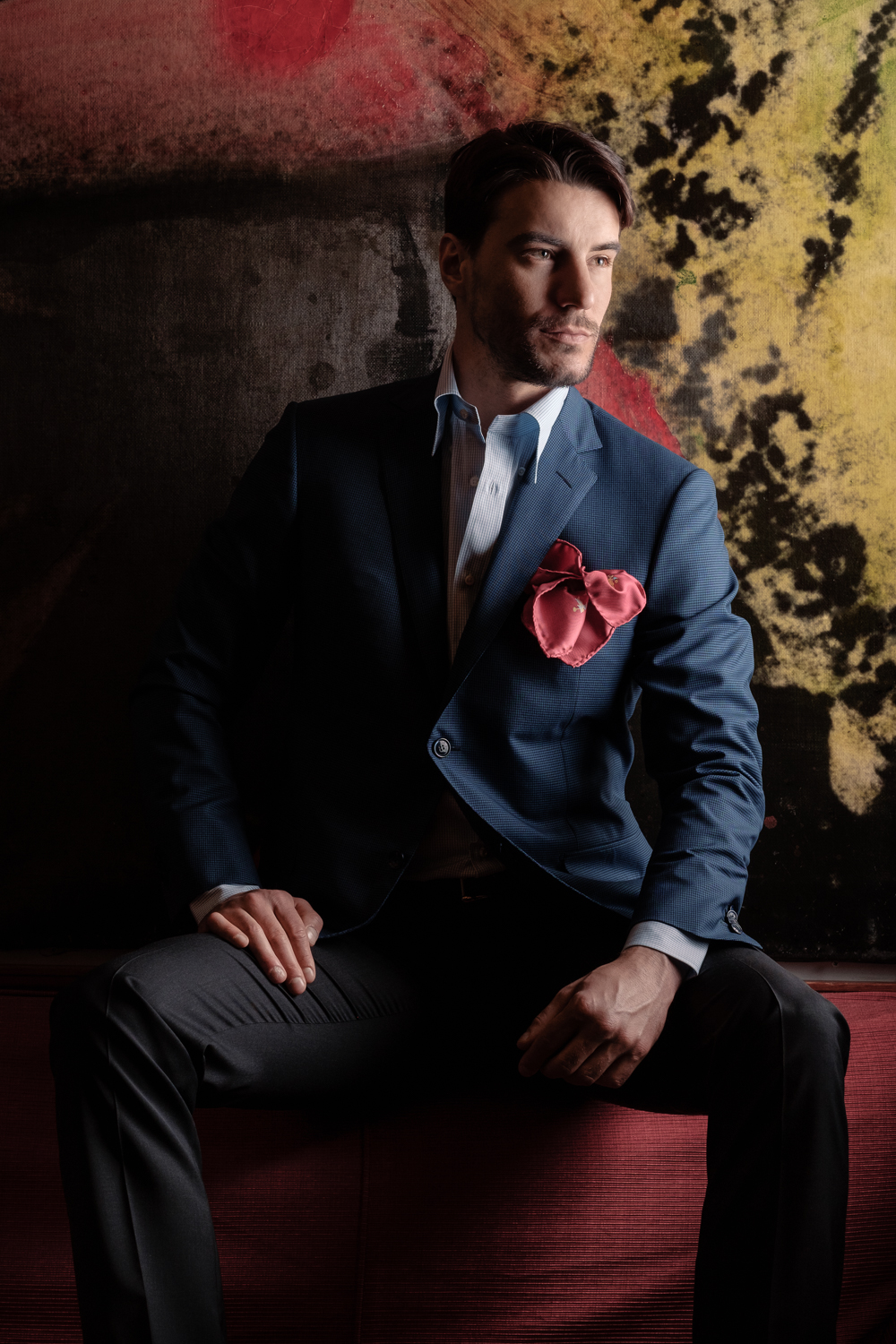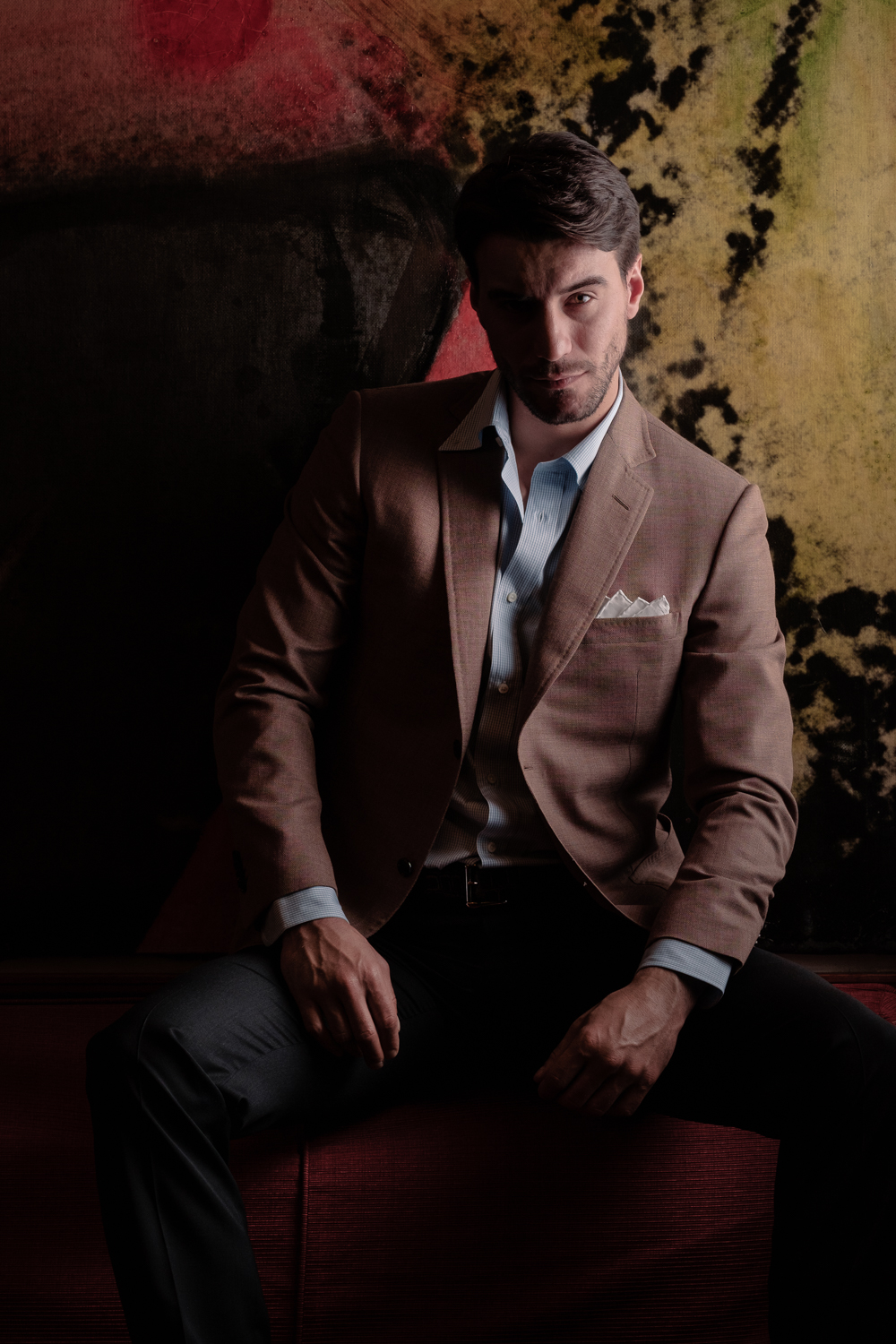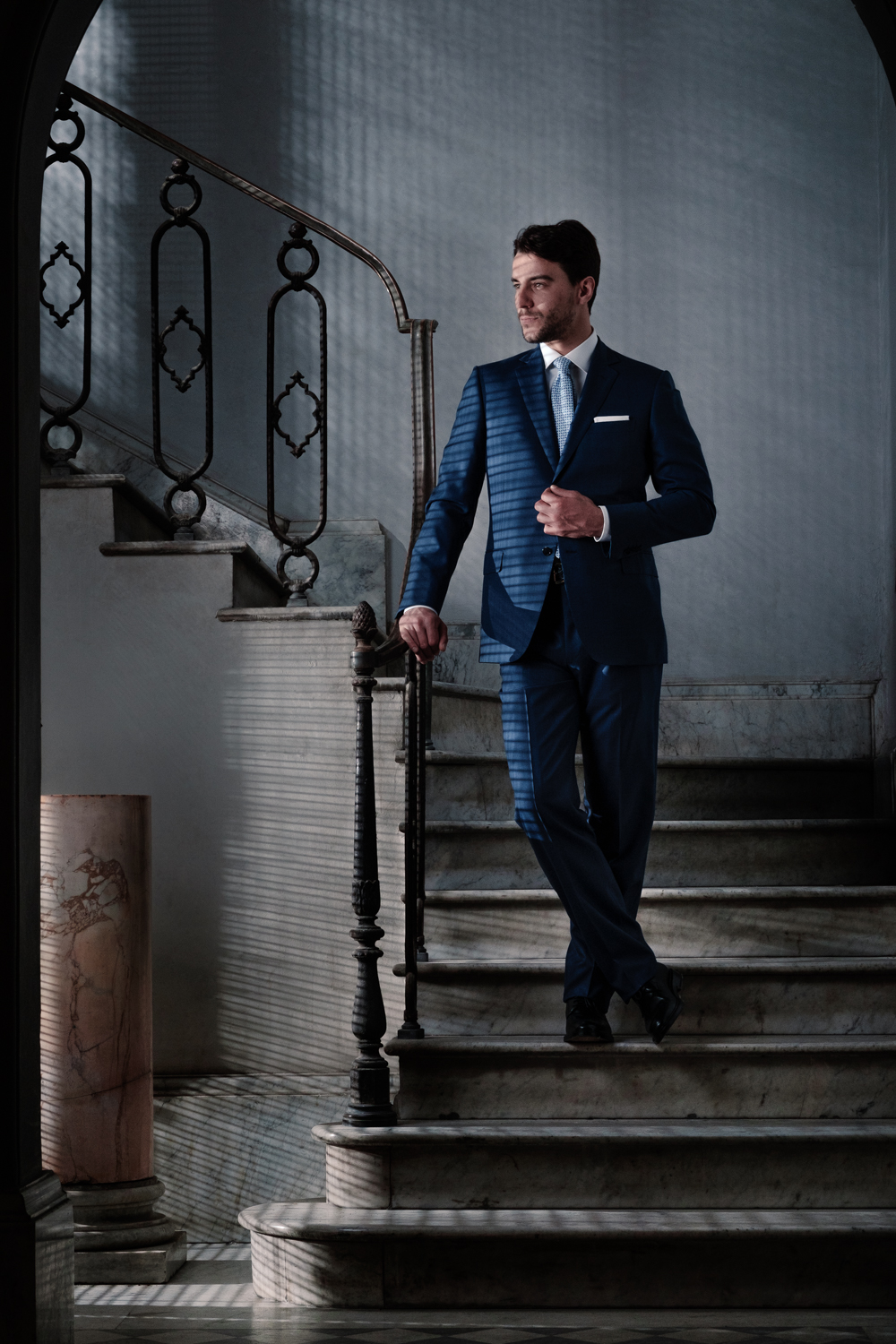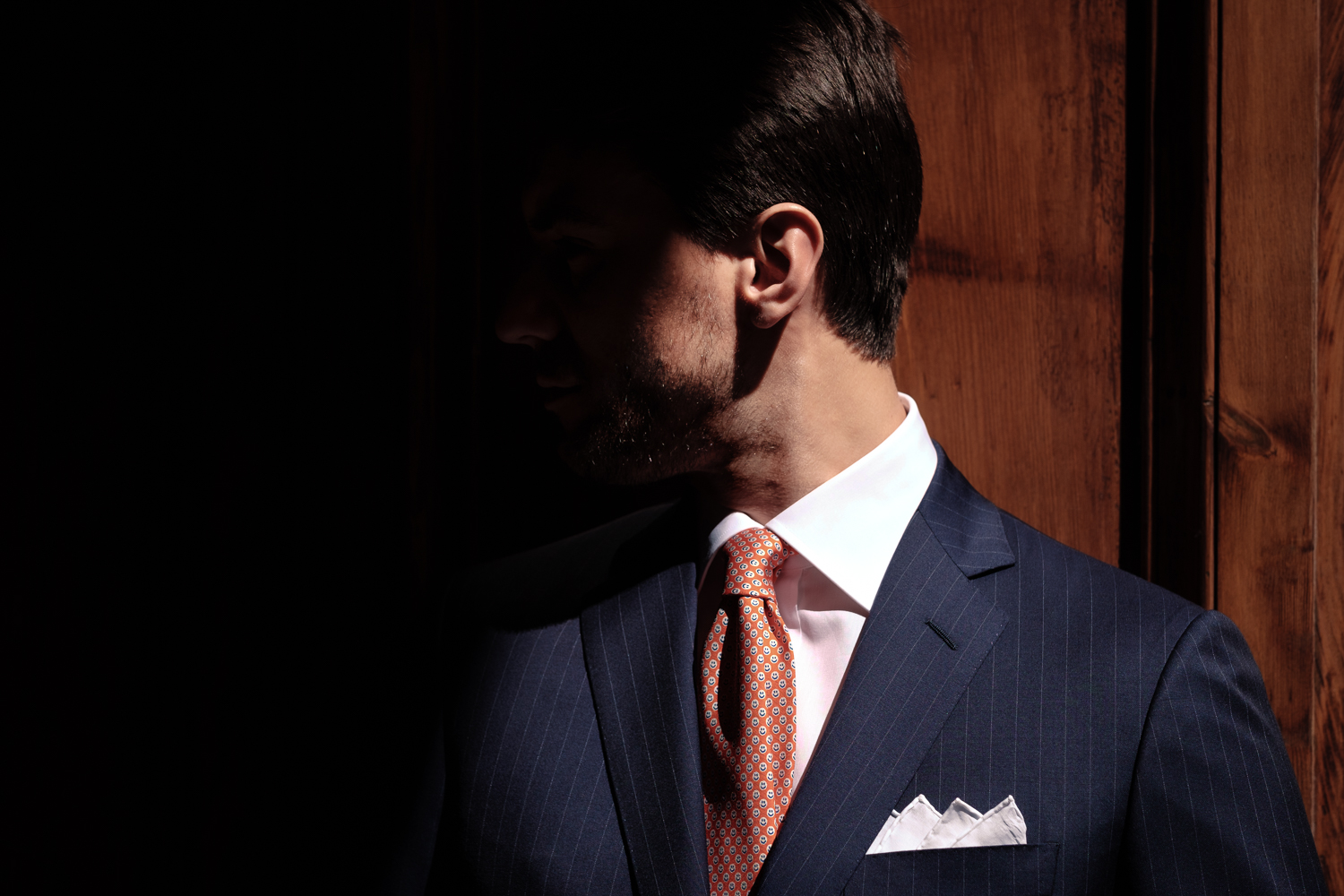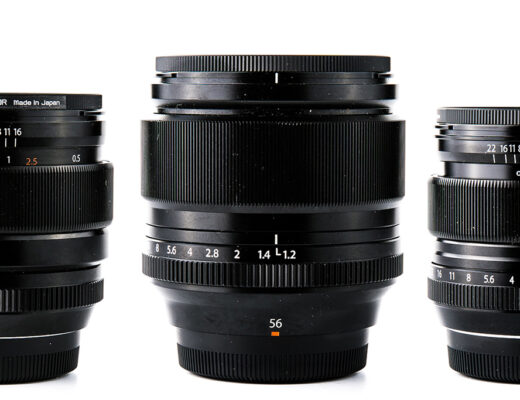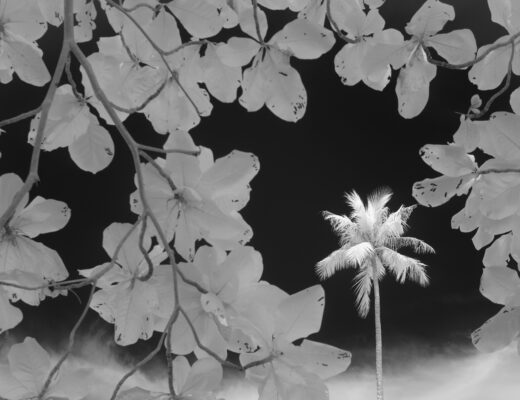Once upon a time there was a King of Italy. He lived in Rome, and he had his shirts and suits made by a famous tailor who had his lab/store in the city center. Then the Italian citizens voted for the Republic, and the King had to leave. Not the tailor, luckily, who’s fame had yet to grow stronger and wider. His (and his store’s) name was Battistoni, and when the golden era of movies in Rome exploded, he was the one who got to create magnificent suits for all the movie stars and artists walking through the streets of Rome. If you go through the inscriptions collected in the old books sacredly stored at Battistoni, you’ll find names like Francis Ford Coppola, Marlon Brando, Andy Warhol, Claudia Schiffer, Walter Matthau, Kirk Douglas, Sidney Poitier, George Segal, Anthony Quinn, just to list a few international stars. Then, of course, you would find all (or near all) of the Italian actors, directors, and politicians who, since the 50’s, have lived and worked in Rome.
Nowadays Battistoni still tailors and sells his shirts in the same, gorgeous store in the city center (not only, though, a new store has just been opened in Los Angeles). The store itself is a piece of Italian history, filled with antiques and arts collected or donated by the artists who “were dressed” by Battistoni, and of course the suits, shirts, jackets, and accessories from the classic and new collections.
Working in such a place is first of all a privilege, but also a challenge. Last May my Fujis and I had both. The environment is exactly the opposite of those contemporary “concept stores” with their huge, empty spaces. Placing lights with their stands and softboxes is all but easy, due to space limitations and to the fact that most of the arts, antiques, and furniture cannot be moved because they are too fragile, too precious, or just too heavy. Luckily for me, the combination of Fuji gear and Yongnuo flashes, with their flexibility and their small weight and size, made working in such an environment not only possible, but actually fun and productive.
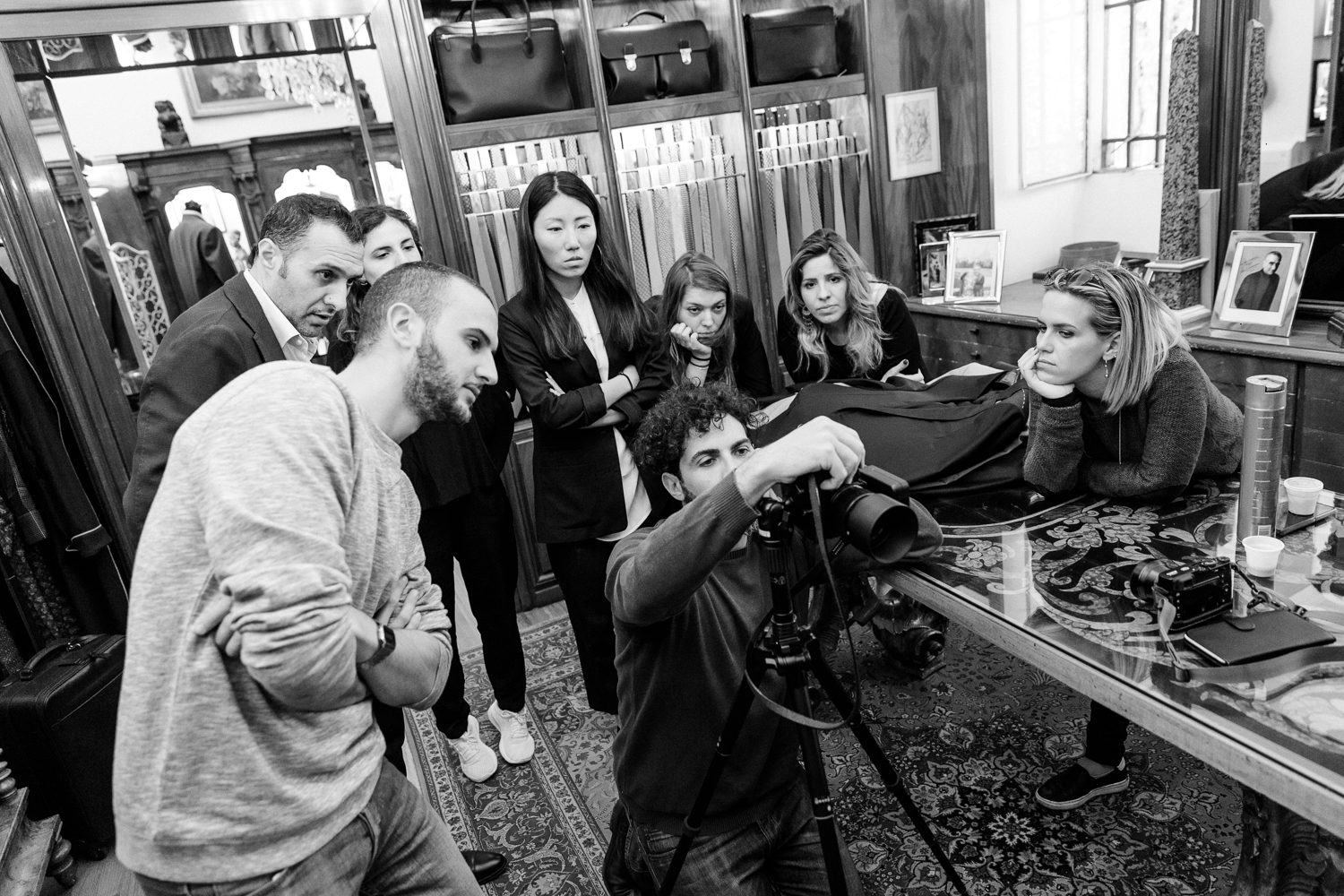
photo by Paola Soldi. The live view on the back screen allows all the team to see what I’m framing and how the final shot looks like once the flashes pop in.
For this shooting I worked with an amazing team. Kuo Shih Yun, the creative director at Battistoni, and her team, Mina Quinto, Claudia Sigala e Chiara Olivi, worked on the concept with the stylist, William Ruffino, and me. During the shooting day, the team included also the make-up artist, Chiara Corsaletti, and two assistant photographers, Giacomo Meiarini, who helped me with the lights, and the set, and Paola Soldi, who took care of the backstage photos. The model, Gonzalo Cabo Prieto, came all the way from Madrid to work with us, and he was simply amazing.
In fashion photography, especially when shooting lookbook or campaign material, the “less is more” rule is usually applied to its limits. Any detail which is not strictly related with the clothes or the styling is welcomed as an enemy. But Battistoni is about history and tradition as much as it’s about fashion, and the shooting was hence staged in the store and around its premises (the building’s lobby, the entrance, etc.).
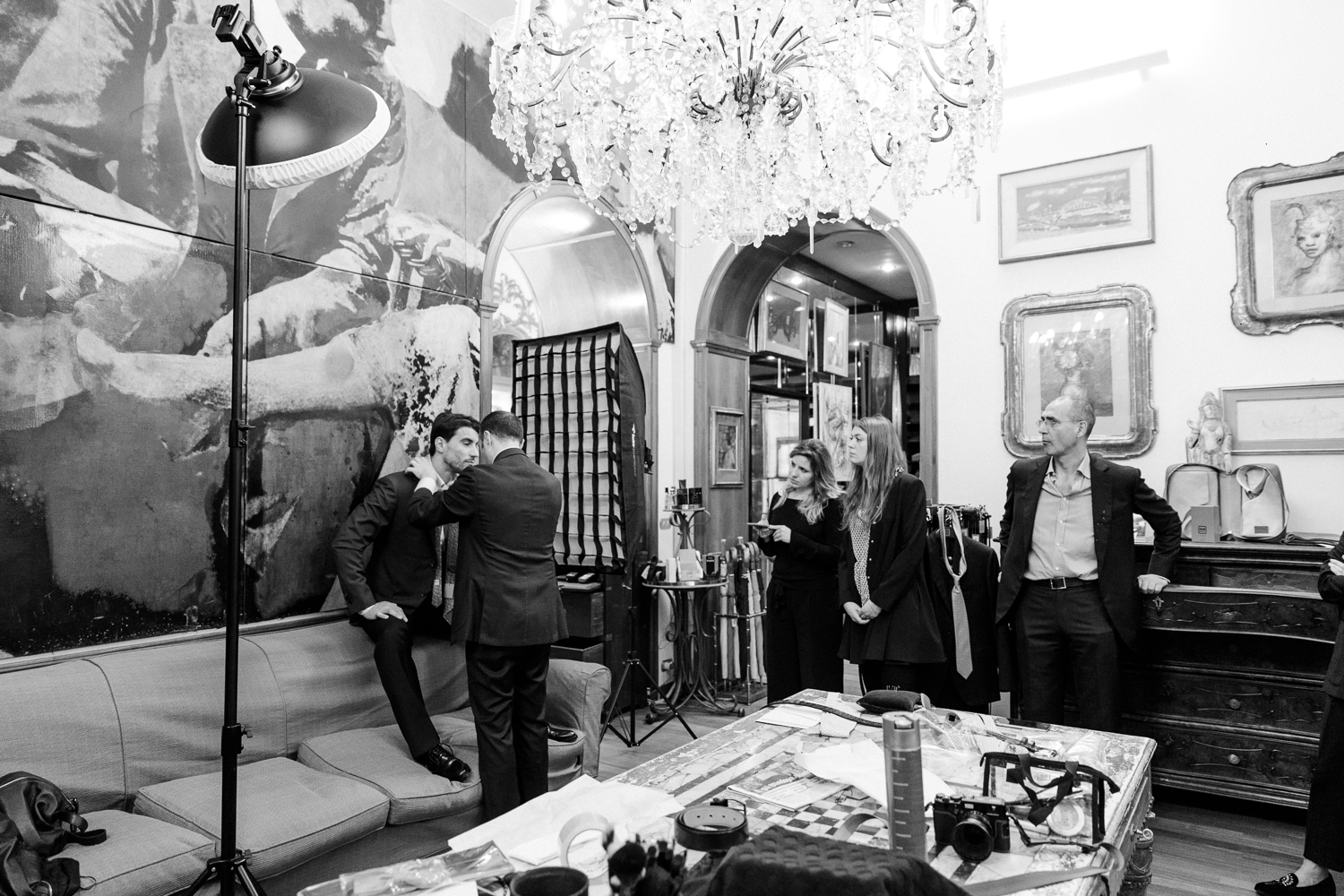
photo by Paola Soldi. William fixes the clothes on Gonzalo in the “Schifano room”. The flashes are placed in the final position, though I used only the softbox on the right for the final shots.
In the store, we started from “the suits room”, a less than 3x3m space, surrounded by mirrors, and filled with suits hanging on the shelves. The original light in the room was far from good for shooting purposes, so I had to make my own. I hid three flashes, two mounting softboxes and one with a beautydish, behind corners and shelves. The two softboxes were placed one over the other so to create a super tall, 2.50m softbox, perfect to evenly lit the subject from his left. The beautysdish, instead, was placed high above and behind Gonzalo’s right shoulder, to create a harder, shaper and stronger light bouncing right on his hair and shoulders. For this shot I used the X100T with the 50mm equivalent teleconverter, which allowed me to get the corridor, with its mirrors and reflections, in the scene. The camera is manually set to f/8, 1/125th and 400ISO. I love how the framing creates this rhythm between wood, glass, model, and suits, in a repetition of materials, subjects and spaces. The worst problem with this shot was to hide the flashes from all the reflections in the mirrors!
Then we moved to the “Schifano room”, a large room towered by a huge painting from the famous Italian painter Mario Schifano. The room is furnished with a large crystal chandelier and an immense marble table, which are both impossible to move and obtrusive when trying to photograph the painting. We sat Gonzalo on the seatback of the long red sofa under the painting, then I originally placed two lights on the very sides, so to lit the painting sideways and increase its textures. On Gonzalo’s left, I placed the mainlight, a 160cm Softbox pointing straight against him. On his right, very high and above his right shoulder, I placed the beautydish. However, the presence of the sofa made it impossible to place it as sideways as I intended, so at the end I opted for switching of the second light and working solely with the main one. I used the X-T10, with the Fujinon 56mm f1.2, manually setting at f/8, 1/180th, and 400ISO. I love how the light and the pose increase the feeling of textures from the clothes, the sofa, and the painting, and how gently and unpredictably the colors pop out.

photo by Paola Soldi. The flash shoots from above Gonzalo and straight through the gate to create the shadows.
When we got to the building’s lobby, the typical entrance of a rich, city centered, ancient building, we found great details, such as the marble and the handrail, but also a dull white wall. To “fix” it, I created some more textures using the metal cage of the elevator from Gonzalo’s right side and from the floor above, by firing flashes through it. Then I added a main light on his right side, at 45°, hiding it just behind the corner. I used again the X-T10 with the 56mm, using the same settings but for the f/11 aperture to get all the details from the shadows behind Gonzalo. I love how the shadows from the cage here define the volumes of the suits and of all the other details, and how the long shadow on the back seems to continue the shape started by the broken column.

photo by Paola Soldi. Here you can see the other flash shooting through the gate to create some more shadows, and the main light with the softbox pointing at Gonzalo.
Finally, at the building’s entrance, I used the natural sunlight to lit and shape the subject and the X-T10 with the 56mm to shoot him. At first I put Gonzalo directly under sunlight, using the hard shadows to hide his face and create an almost metaphysical portrait that shows the perfect lines of the suit and shirt, and the soft curves of the tie. Then I moved Gonzalo back in the shade, and I used the light bouncing from the wooden door to backlit him while he was in the act of fixing his cufflinks. The outcome is very elegant and soft, with the shallow depth of focus of f/2.8 that helps increasing the dreamy composition.
As I described in a previous article, I use the Yongnuo speedlite YN568EX II flashes with the Yongnuo YN622C-TX transmitter designed for Canon cameras, which, using the legacy function, can be operated by Fujifilm cameras as well (though not in TTL mode). The transmitter is able to radio-control the manual settings such as power and zoom of Yongnuo speedlites when connected to the YN622C Yongnuo receivers.
I hope you enjoyed the shots, the backstage photos, and the story behind them. For any questions or doubts please do not hesitate to contact me!
CREDITS:
Photographer: Luca Rossini
Creative Director: Kuo Shih Yun
Clothes: Battistoni
Model: Gonzalo Cabo Prieto
Styling: William Ruffino
MUA: Chiara Corsaletti
Team: Mina Quinto, Chiara Olivi, Claudia Sigala, Giacomo Meiarini
Backstage: Paola Soldi



